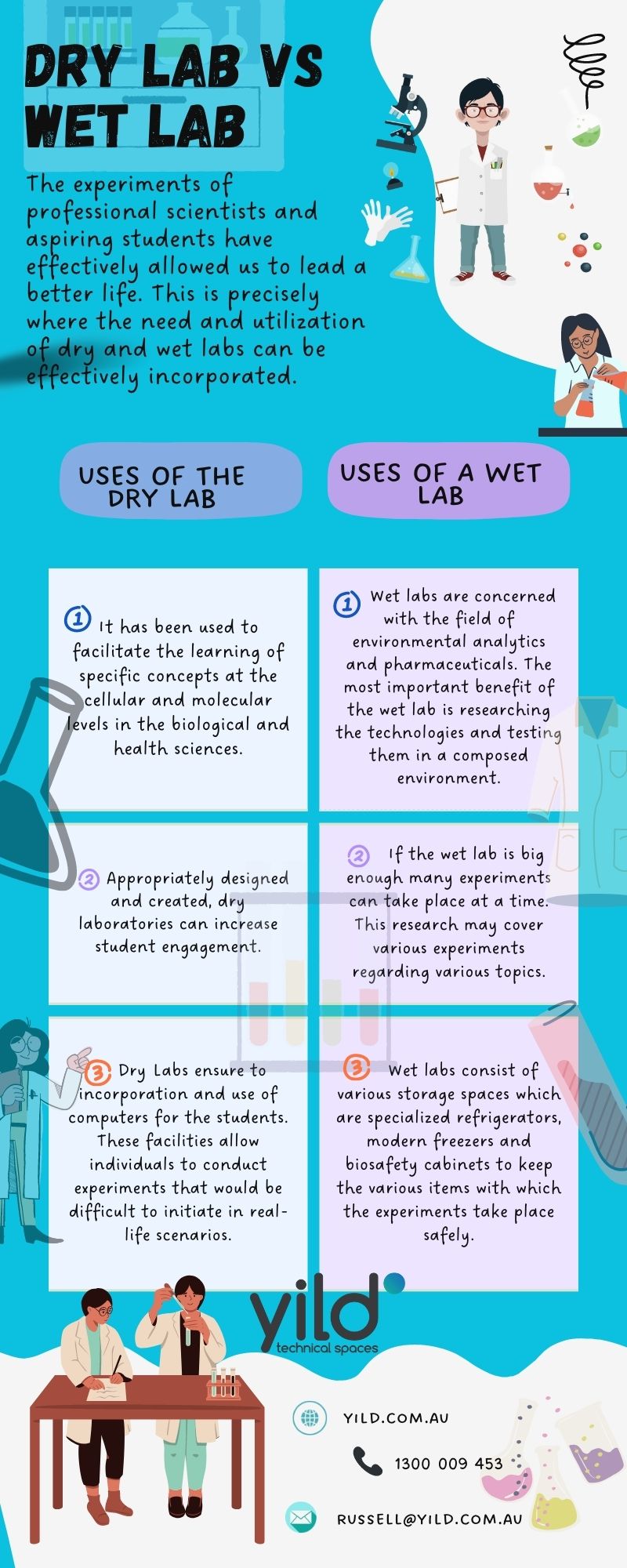The progression of supercomputing technology has expanded the capabilities of scientific testing. We've come a long way from simple manual testing with logbooks and mental calculations to dry and wet lab facilities with interconnected functionality supported by supercomputer networks. The most important decision you'll have to make when starting a life science venture is whether you'll need to use a dry or wet lab environment.
Wet labs and dry labs are two very different environments, but both are critical in a wide range of scientific jobs and scientific breakthroughs! Laboratories are based primarily on specifications, which explains why they are better than labs. Some laboratories are tightly controlled and have extremely stringent controls in place.
 |
| wet and dry labs |
Wet labs and dry labs are becoming more intertwined as technology and testing advance. But their goals and design elements remain vastly different. Today, we'll compare wet and dry labs to demonstrate the distinction between the different settings.
What is a wet lab?
A wet lab is a laboratory in which chemicals, drugs, liquids,
and gaseous substances are treated in conjunction with other solutions or in a
vapour form. A wet lab may resemble a typical
'laboratory' that you ended up sitting in during research lessons at school or
university.
You'll recall seeing Bunsen burners, sinks, and a variety of
experimental setup and safety devices around the room, which are all there to
assist you in carrying out experiments and keeping you safe. Direct air circulation
and pipework are the most significant factors for this type of laboratory. Most
scientists who work in a wet lab have a degree in their desired field and are
well-equipped to understand lab techniques and the required safety measures.
What is dry lab?
A dry lab is a laboratory area that has been established for
parallel computational simulations and experiments. Scientists in dry laboratories
use computer-generated model to simulate
circumstances in our physical realm rather than performing physical exams on
chemicals, drugs, and other samples. A clean power system is also installed in
the laboratory for sensitive computers, research tools, and network
communication. It also has vibration controls for instruments whose
calibrations need to be maintained.
Differences between wet and dry labs:
Wet lab
- It
is a laboratory where chemical compounds, drugs, fluids, and vapors are
tested using various solutions.
- Enzyme
depiction in biology, the concentration of a solution in chemistry, and
light diffraction in physics. These are examples of experiments.
- The
lab is designed with Biosafety cabinets, specialized refrigerators, and
installed freezers.
- Experiments
take place according to strict patterns and procedures.
- Wet lab-related jobs are quality control, forensics, pharmaceuticals, etc.
Dry lab
- It
is a laboratory that performs computational analysis, model construction,
and Simulink.
- Experiments
include- Quantum state analysis, ground theory technique, coding and text
inference, mapping, and networking.
- Lab
specifically designed with or fitted with HVAC controls to improve cooling
and humidity levels .
- Experiments
can take place in either online or offline mode.
- Computers are used for analysis and evaluation
of bio-data.
- Dry lab jobs include engineering, IT, data science, etc.
You can choose
between a wet lab or a dry lab based on your needs... A dry lab
allows you to complete product analysis before moving to full development. If
you need to work with any liquid while developing your product, you will need
to work in a wet lab environment. Each one has its unique features that you can
choose from.







No comments:
Post a Comment